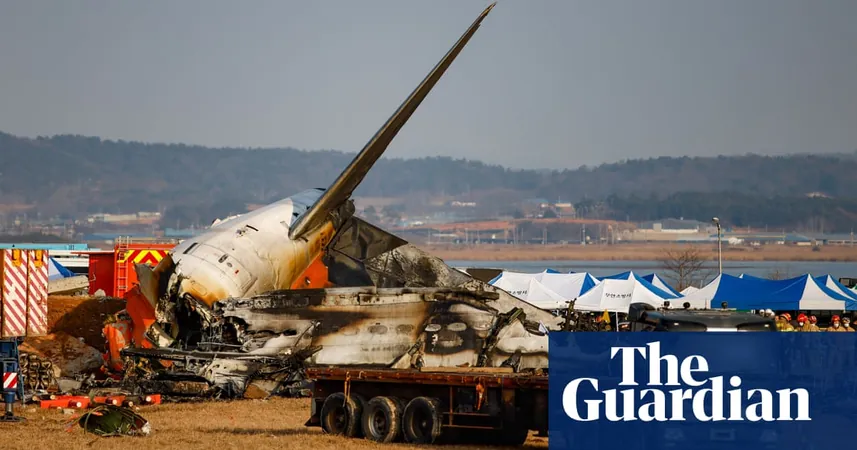
Tragic South Korea Plane Crash: Bird Strikes at the Center of Investigation
2024-12-29
Author: Kai
Tragic South Korea Plane Crash: Bird Strikes at the Center of Investigation
The recent crash of Jeju Air flight 2216 has left the aviation community reeling, as it resulted in the devastating loss of 179 lives among the 181 onboard. As investigators launch a thorough examination into the cause, initial findings suggest bird strikes may have played a crucial role in this tragic incident.
As night fell at Muan International Airport, authorities, faced with the heart-wrenching task of addressing the bereaved families, turned their focus to the sequence of events leading up to the accident. Officials reported a critical warning from the control tower about bird activity shortly before the pilot declared a mayday. Eyewitnesses noted an unusual presence of birds around the airport, which may have contributed to the calamity.
Experts in aviation safety emphasize that while bird strikes are a typical threat during takeoffs and landings, they usually do not cause catastrophic failures alone. Geoffrey Thomas, editor of Airline News, stated, "Bird strikes occur far more frequently than one might think; however, they rarely lead to the loss of an aircraft by themselves." This sentiment was echoed by other aviation specialists who expressed their skepticism about bird strikes being the sole cause of the landing gear malfunction reported.
Marco Chan, a senior lecturer in aviation operations, highlighted the risks associated with bird strikes, particularly regarding the size of the birds involved and the aircraft's speed. The Boeing 737-800, involved in the crash, was designed to handle various bird strike scenarios, but the sudden influx of birds in the airport vicinity poses significant risks. Notably, Muan International Airport is in proximity to three natural bird sanctuaries, making it a hotspot for migratory birds—nearly 19,000 were recorded in a recent survey.
The airport has been identified as having the highest incidence of bird strikes among South Korea’s regional airports, with 10 incidents reported between 2019 and August this year. A 2020 environmental impact assessment had already highlighted the risk factors associated with the airport’s location, which includes wide farmland and rich bird habitats.
National regulations dictate that airports must maintain dedicated staff for bird control to mitigate such risks, yet the increase in bird strike cases—from 108 in 2019 to 152 in the previous year—has sparked discussions about whether climate change is amplifying these threats. With migratory patterns shifting and certain species becoming permanent residents, the relationship between ecology and aviation safety cannot be overlooked.
To combat this looming problem, airports are employing a range of countermeasures, including sound deterrents, monitoring systems, and even innovative technology like AI and radar to track avian movements on and around airfields.
As investigators sift through the wreckage and analyze flight data, the aviation world watches closely, hoping to avoid such a horrific incident in the future. The focus on bird strike risks serves as a stark reminder of the balance that must be maintained between nature and the ever-evolving demands of air travel.



 Brasil (PT)
Brasil (PT)
 Canada (EN)
Canada (EN)
 Chile (ES)
Chile (ES)
 Česko (CS)
Česko (CS)
 대한민국 (KO)
대한민국 (KO)
 España (ES)
España (ES)
 France (FR)
France (FR)
 Hong Kong (EN)
Hong Kong (EN)
 Italia (IT)
Italia (IT)
 日本 (JA)
日本 (JA)
 Magyarország (HU)
Magyarország (HU)
 Norge (NO)
Norge (NO)
 Polska (PL)
Polska (PL)
 Schweiz (DE)
Schweiz (DE)
 Singapore (EN)
Singapore (EN)
 Sverige (SV)
Sverige (SV)
 Suomi (FI)
Suomi (FI)
 Türkiye (TR)
Türkiye (TR)
 الإمارات العربية المتحدة (AR)
الإمارات العربية المتحدة (AR)